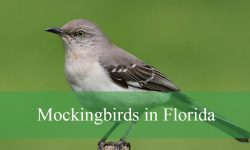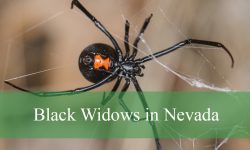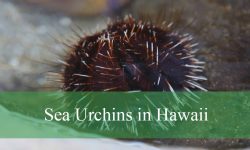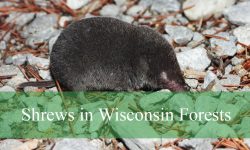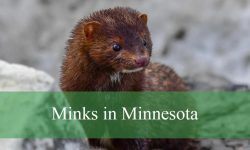As twilight settles over a Kentucky field, a slender figure moves through the grass, balancing delicately on impossibly long legs. It looks like a spider but glides differently — graceful, fragile, and almost ghostlike. This is a harvestman, known affectionately (and often mistakenly) as the daddy longlegs.
To many Kentuckians, these creatures are familiar sights on porches, forest floors, and under leaf litter after rain. They’re so common that most people barely notice them — yet they’ve been surrounded by myths for centuries. Some say they’re the most venomous spiders in the world but too small to bite humans. Others think they’re baby spiders or some strange hybrid of insect and arachnid.
The truth about harvestmen in Kentucky is far more fascinating than folklore. They’re not spiders, not venomous, and not dangerous — but they are some of the most ancient and ecologically important arachnids on Earth. Let’s journey into their hidden world.
Meet Kentucky’s Harvestmen

What Are Harvestmen?
Harvestmen belong to the order Opiliones, part of the class Arachnida, which also includes spiders, scorpions, ticks, and mites. Despite their spider-like appearance, harvestmen are unique creatures with key differences.
While spiders have two main body segments — a distinct head (cephalothorax) and abdomen — harvestmen have these parts fused into a single, oval body. This gives them their characteristic “one-piece” look, as if drawn in a single brushstroke.
Their long, spindly legs can span several inches, allowing them to move swiftly and nimbly over leaf litter and undergrowth. These legs also serve as sensory tools, detecting vibrations, air currents, and scents from potential prey or predators.
Unlike true spiders, harvestmen in Kentucky do not spin silk, do not have venom glands, and do not hunt using webs. They are wanderers, scavengers, and quiet recyclers of the forest floor.
Common Species in Kentucky
Kentucky’s humid woodlands and temperate valleys are home to at least a dozen native species of harvestmen, though many go unnoticed. Some of the most common include:
-
Leiobunum vittatum – The most widespread species in the eastern U.S., often seen on house siding or in barns.
-
Leiobunum politum – A sleek-bodied species found in forests and under logs.
-
Hadrobunus grandis – Larger and darker, common in forest leaf litter and near caves.
-
Odiellus pictus – A smaller species often spotted on stones and shaded walls.
These species thrive across the state, from the Appalachian foothills in eastern Kentucky to the farmlands and river valleys of the west. Each one plays a quiet but vital role in keeping the environment balanced.
Anatomy and Adaptation
Designed for Balance
The most striking feature of any daddy longlegs is its legs — impossibly thin, yet incredibly strong and flexible. The second pair, especially, acts as a kind of sensory antennae, feeling the world and guiding the creature through its surroundings.
If attacked, a harvestman can deliberately shed a leg to escape — a survival mechanism called autotomy. The lost limb will continue twitching for several minutes, distracting predators while the harvestman makes its escape.
This reflex is powered by residual nerve activity and muscle contractions — a remarkable evolutionary trick that has saved countless harvestmen in Kentucky from birds, frogs, and spiders.
A Body Built for Survival
Their fused body not only distinguishes them from spiders but also protects their internal organs from damage. The smooth, compact structure helps them retain moisture — an essential trait in Kentucky’s sometimes hot, humid summers.
Their eyes, perched atop a small raised turret called an ocularium, offer a nearly 360-degree view of their surroundings. While their vision is limited, their sensitive legs compensate, acting as both radar and feelers in the dark.
And though they lack venom and silk, they have one secret weapon: chemical defense glands. When threatened, a harvestman releases a foul-smelling secretion from glands near its legs — potent enough to repel ants, spiders, and even small mammals.
Behavior and Daily Life
Nocturnal Wanderers
Most harvestmen in Kentucky are nocturnal. During the day, they hide under rocks, logs, or bark, venturing out at dusk to feed. Their slow, methodical movements contrast with the frenetic pace of many other arthropods.
At night, the forest floor comes alive with their quiet foraging. They stroll through moss and leaf litter, scavenging dead insects, fungi, decaying plant matter, and sometimes live prey like soft-bodied insects or small worms.
They’re nature’s janitors, recycling organic material into nutrients that feed the soil and plants. Without them, decomposition in Kentucky’s forests would slow dramatically.
Communal Gatherers
While typically solitary, some harvestmen display curious social behavior. In late summer and early fall, hundreds may gather in shaded areas like under bridges, cave mouths, or rock ledges — forming writhing clusters that appear almost alive.
Scientists believe these gatherings help regulate temperature and humidity, or provide protection through numbers. To the casual observer, these “spider balls” might seem eerie, but they are harmless — just a communal rest stop for these long-legged travelers.
The Diet of Harvestmen
Omnivores of Opportunity
Unlike spiders, which rely solely on hunting live prey, harvestmen in Kentucky are omnivores and scavengers. Their diet includes:
-
Dead insects and worms
-
Plant detritus and fungi
-
Small invertebrates
-
Pollen and nectar
They use their small, pincer-like mouthparts (chelicerae) to tear food apart rather than inject digestive enzymes. This means they must chew, not liquefy, their meals — a rare trait among arachnids.
Their flexible diet allows them to thrive in nearly any environment, from damp forest floors to urban gardens. They are the ultimate survivors, adapting to feast on whatever the landscape provides.
Cleaners of the Wild
By consuming decaying matter, daddy longlegs perform an essential ecological service. They accelerate decomposition, recycle nutrients, and reduce waste in their habitats.
In Kentucky’s deciduous forests, this process helps keep soil fertile, promoting the health of trees, fungi, and countless other organisms. Each harvestman, in its tiny way, sustains the great cycle of life.
They may not be predators of legend, but they are quiet custodians — keepers of the forest’s unseen balance.
Reproduction and Life Cycle
Courtship and Mating
The mating behavior of harvestmen in Kentucky is remarkably gentle compared to many arachnids. Males often approach females with slow, deliberate movements, using their long legs to tap and sense her signals.
Males transfer sperm directly using specialized appendages — a more intimate process than the indirect sperm web used by spiders.
Courtship rituals can last several minutes and involve leg-touching, vibrations, and subtle movements. Once mating is complete, females seek out moist soil or leaf litter to deposit eggs — often hundreds at a time.
From Egg to Adult
After several weeks, tiny nymphs hatch, resembling miniature adults with shorter legs. They molt multiple times as they grow, each stage bringing them closer to maturity.
Most live for about one year, though some overwinter as eggs, waiting for spring’s warmth to awaken them.
In Kentucky’s variable climate, timing is crucial — too early, and frost may kill them; too late, and predators abound. Only the most adaptive survive, continuing a lineage that has persisted for over 400 million years.
Harvestmen and Kentucky’s Ecosystems
Hidden Engineers of the Forest Floor
Though easily overlooked, harvestmen in Kentucky are integral to the health of forest ecosystems. By feeding on detritus and decaying matter, they maintain nutrient cycling that sustains plants, fungi, and microorganisms.
Their presence indicates a healthy, balanced environment. When they thrive, so do countless other species — from soil bacteria to songbirds.
They also serve as prey for small mammals, amphibians, and birds, linking the decomposer world to higher food chains.
Cave Dwellers and Endemic Species
Kentucky, with its vast cave systems — including Mammoth Cave, the longest in the world — provides unique habitats for harvestmen. Some species live exclusively in these dark ecosystems, adapted to life without light.
These cave-dwelling harvestmen often have pale bodies and elongated legs, evolved for navigating narrow passages and sensing vibrations in total darkness.
Such species are rare and often endemic, meaning they exist nowhere else on Earth — a reminder of Kentucky’s extraordinary biodiversity beneath the surface.
Myths and Misconceptions
Myth 1: “Daddy Longlegs are the most venomous spiders in the world.”
False. Harvestmen in Kentucky are not spiders, and they do not have venom glands or fangs. They are entirely harmless to humans.
Myth 2: “They can’t bite because their fangs are too small.”
Also false — they have no fangs at all, only small pincers for grasping food.
Myth 3: “They build webs like spiders.”
Incorrect. Harvestmen do not spin silk and never build webs.
Myth 4: “They’re baby spiders.”
Completely untrue. Harvestmen are a separate order of arachnids, unrelated to spiders beyond distant ancestry.
These persistent myths show how misunderstood daddy longlegs truly are — gentle recyclers mistaken for deadly predators.
Harvestmen and Humans
A Peaceful Neighbor
Despite their spooky appearance, harvestmen in Kentucky pose no threat to humans. They don’t bite, sting, or spread disease. In fact, they help reduce pest insects and clean up organic debris around homes and gardens.
Finding a harvestman on your porch or window is no cause for alarm — it’s a sign that the local ecosystem is healthy.
Many Kentuckians recall childhood memories of gently holding these delicate creatures, watching their legs sway like blades of grass. Though fragile, they embody nature’s quiet strength.
Conservation Through Understanding
Like many small creatures, harvestmen suffer from habitat loss, pesticide use, and human misunderstanding. Forest clearing and soil disruption reduce the leaf litter and moisture they need to survive.
Protecting them doesn’t require special programs — just awareness. Maintaining natural leaf litter, reducing chemical use, and appreciating their ecological role can make a difference.
To protect harvestmen in Kentucky is to protect the very foundation of the ecosystems we depend upon.
Surprising and Little-Known Facts About Harvestmen in Kentucky
-
Harvestmen are among the oldest known arachnids, with fossils dating back over 400 million years.
-
They breathe through tiny holes in their body — no lungs required.
-
They clean themselves meticulously using their legs as grooming tools.
-
Some species can emit a defensive odor that deters predators.
-
Their legs can be 20 times longer than their body.
-
The “daddy longlegs dance” — rhythmic leg movements — helps them sense air currents.
-
Unlike spiders, both sexes care for their eggs, guarding them from predators.
-
In some species, males carry eggs on their body until they hatch.
-
They are immune to their own chemical defenses but repulsive to ants and spiders.
-
Their bodies can regenerate small injuries, an ability rare among arachnids.
FAQs About Harvestmen in Kentucky
Are harvestmen venomous?
No. Harvestmen in Kentucky have no venom glands or fangs. They are completely harmless.
Are harvestmen the same as spiders?
No. They belong to a separate order, Opiliones. They do not spin webs or produce silk.
What do harvestmen eat?
Dead insects, fungi, small invertebrates, and organic debris.
Do harvestmen bite humans?
Never. Their mouthparts are too small to pierce skin.
Why are they called “harvestmen”?
The name comes from their appearance during harvest season, when they are most visible in fields and barns.
Do harvestmen live in groups?
Sometimes. They may gather in large clusters to conserve moisture or for protection.
Where can I find them in Kentucky?
In forests, gardens, under logs, rocks, and bridges — especially in humid areas.
Do they live in caves?
Yes. Kentucky’s limestone caves are home to several adapted species.
How long do they live?
Usually about one year, depending on climate and predation.
Are harvestmen beneficial?
Absolutely. They clean the environment by consuming dead matter and controlling small pests.
Final Thoughts
The harvestmen of Kentucky may not inspire the same awe as eagles or deer, but their quiet existence sustains life in ways few people realize. Beneath fallen leaves and forest shadows, they perform vital work — recycling, cleaning, and balancing ecosystems one tiny step at a time.
They are survivors from an ancient world, unchanged for millions of years, still performing the same humble duties that shaped the soil beneath our feet.
The truth about harvestmen in Kentucky is this: they are not monsters, not myths, but the gentle custodians of nature — proof that even the smallest lives hold immeasurable worth.

